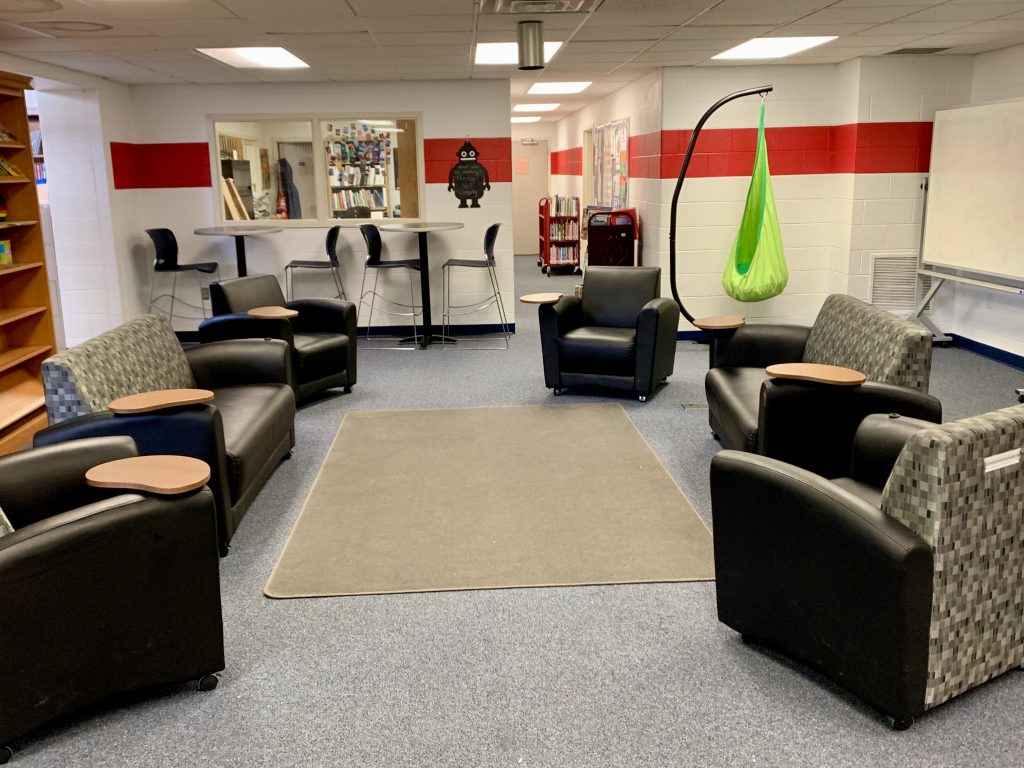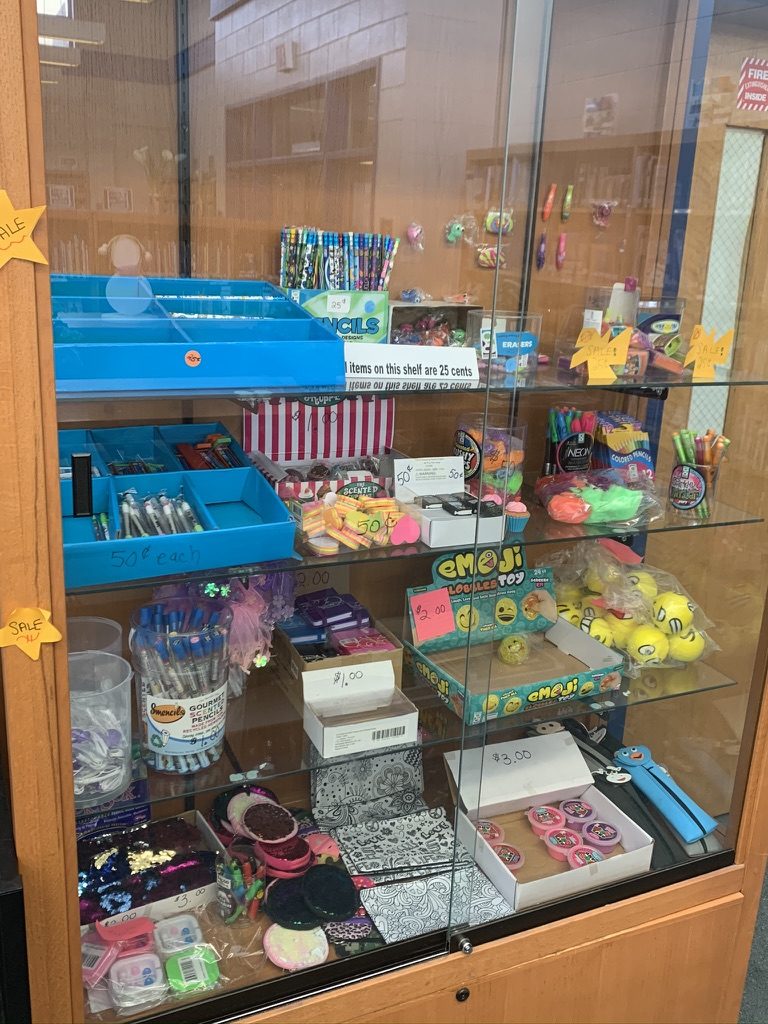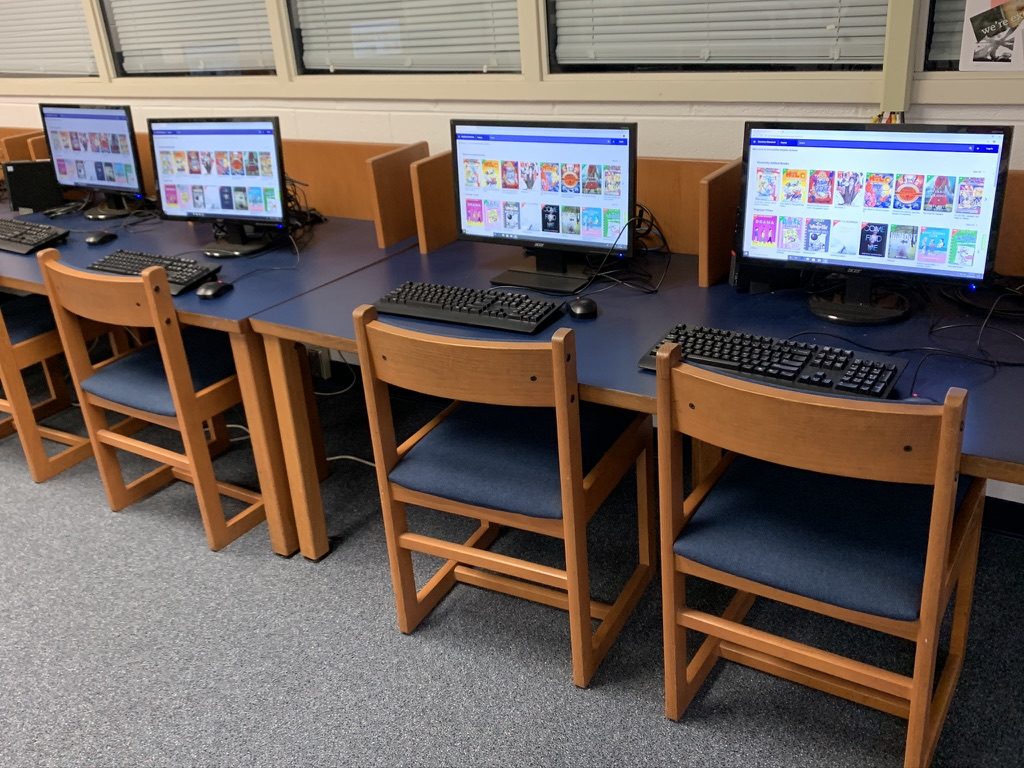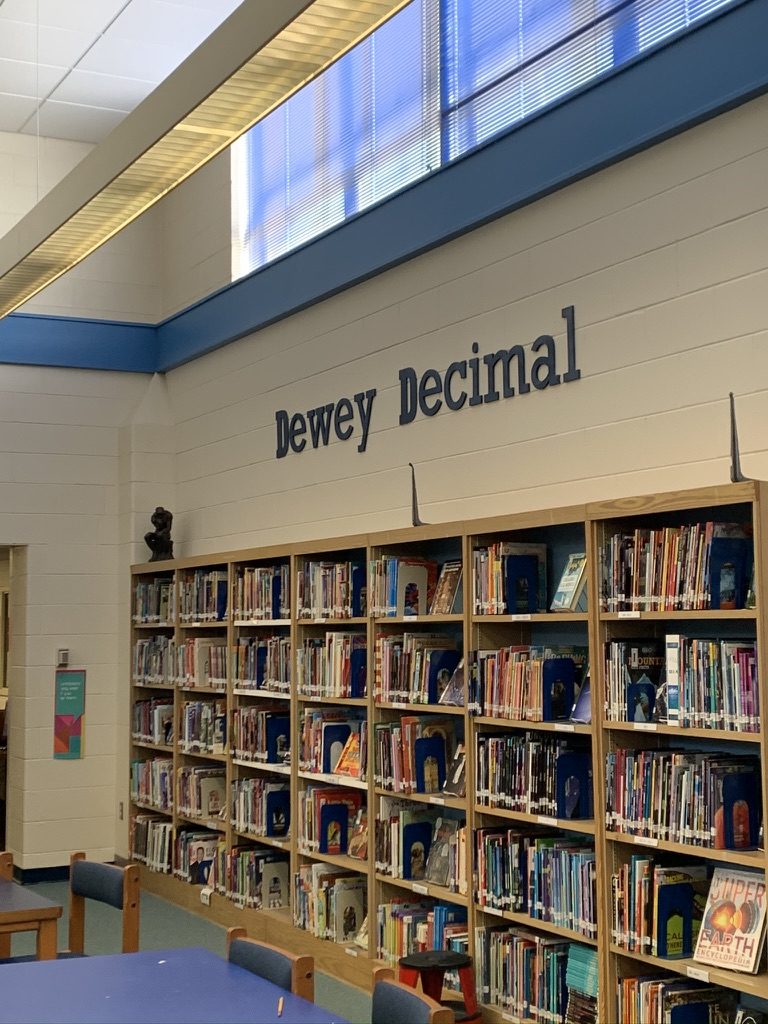For my second library visit I chose to take a trip down the hall to my school’s library. There is not a website specific to the library, but rather a link from the middle school website: ms.dinwiddie.k12.va.us that will take you straight to the catalog. Aside from the catalog the website does not offer any additional information about hours, but students know that the library is open during school hours, because the library services Dinwiddie Middle School students and staff. All staff of the school are listed on the main webpage including our one and only (amazing) librarian Mrs. Mellick.
The library is located in the very center of the building, directly ahead of the main entrance. The library is without a doubt outdated, but the school itself is really old and in need of remodeling. The library is carpeted and contains a lot of wooden furniture. There are enough wooden sets of chairs and tables to hold about two classes in the center of the library. There is an area in the front of the libraries with sofas and high furniture for students called a learning commons. The shelves are relatively short, but not as short as the shelves in a typical children’s section of a library. The space is very open and easily accessible for our students that are in wheelchairs.

While I was in the library Mrs. Mellick was showing a student new inventory for our library store that “has everything students need to be successful.” The library has a small case filled with things like mechanical pencils, earbuds, erasers, and other various trinkets. The sales from this store go towards supplementing the library budget which she said was “very limited.” Rubin mentions how this is the case for several school library media centers saying, “in tough financial times…SLMCs often become a target for budget cuts” (Rubin, 2016, p. 134).

There were a few books on display at the circulation desk for black history month, one of which is titled Undefeated by Kwame Alexander and Kadir Nelson. She encouraged me to read this book while I was there and it was a great book. There are no special collections for students, but there is a room that I was shown on my behind the scenes part of the tour. This room is full of dvd’s for teachers, as well as classroom book sets that she said were outdated and go against the “voice and choice” concept that is highly regarded in my school amongst the English department.
There are about eight desktop computers set to the catalog, a chromebook cart with thirty chromebooks and two iPads to help with self-checkout of books for students. There is also one touch screen promethean board for teachers that conduct lessons or co-teach in the library. Our school is not 1 to 1 in technology and what Rubin mentions in the textbook is true for my school: “school libraries face the same issues as public libraries in trying to maintain traditional services while budgeting for new technologies and access to digital content” (Rubin, 2016, p. 132).

As far as the books in the library go, there is a section of Dewey for graphic novels and the remainder of the books are separated by fiction or non-fiction and then generified or sorted by Dewey. The library does not have many academic collections, but there is a small section of reference books just in case they are needed. However, there is an abundance and a variety of other books that students can chose from. I believe that our library falls under the second viewpoint that Rubin mentions in that materials are not restricted and students can expose themselves to many ideas and perspectives through the books in our school library (Rubin, 2016, p. 135).

I thought it was pretty cool to get a tour of the library as well as a “behind the scenes tour” and find out about all that if offers to our staff and students.
Rubin, R. (2016). Foundations of library and information science (4th ed.). Chicago, IL: ALA Neal-Schuman.